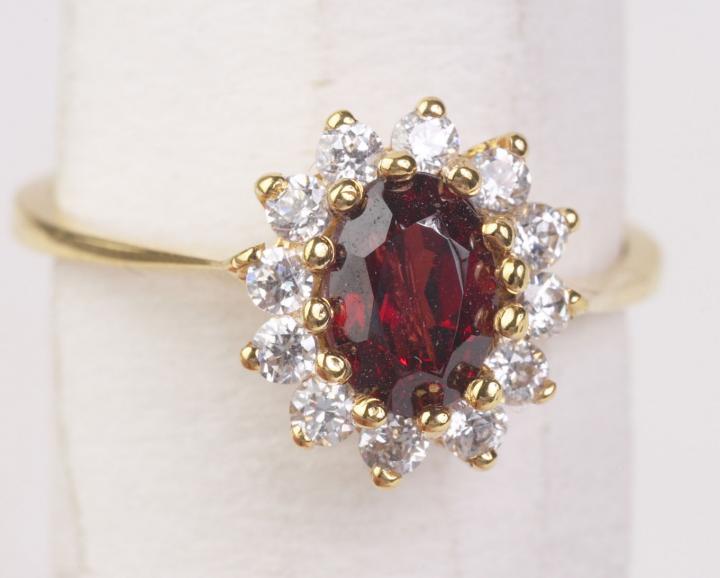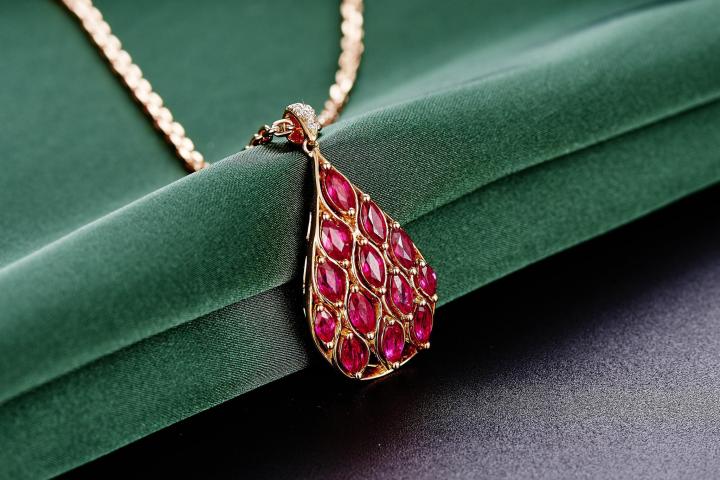Did you know that the ruby is the birthstone for July? What makes the ruby so coveted? Did you know it’s almost as hard as a diamond? Learn more about this fiery gem—one of nature’s rarest precious stones—associated with love, passion, protection, and wealth.
Ruby’s Color
The ruby gets its red coloring from the presence of the trace element chromium. As a variety of the mineral corundum, rubies range in color from a deep, rich cochineal to a lighter rose red. When exposed to sunlight, the UV rays make the chromium glow!
Ruby gemstones may also have a shade of orange, pink, or purple. The most valued ruby color is “pigeon-blood red”—a bright red stone with a tint of purple. The depth of the red color depends on the amount of chromium present in the stone.
The sapphire, which is September’s birthstone, is also a variety of the mineral corundum. All other color varieties of corundum are considered sapphires, but in its purest form, corundum is colorless.
Ruby Meanings, Symbolism, and Folklore
- The word ruby comes from Latin ruber, meaning red. In Sanskrit, the ruby is called ratnaraj—king of the precious stones.
- For centuries, rubies have signified passion, protection, and wealth.
- Ancient warriors in Burma and China adorned their armor with gems to provide protection in battle. Some even inserted the gems into their flesh, believing they created invincibility.
- The ruby has become a symbol of love and commitment. It was once thought to protect against misfortune and illness.
- Early cultures treasured the gem, believing that its color, associated with blood, gave it the power of life. It has also been thought to remedy bleeding and inflammation and increase body warmth.
- If rubies were offered to the god Krishna, ancient Hindus believed he would grant them rebirth as an emperor.
- Long ago, those in India thought that possessing rubies would allow them to live in peace with their enemies. Wearing a ruby on your heart’s side was also thought to allow you to live peacefully.
- Some legends associated rubies with an inextinguishable flame that could shine through clothing and hold the ability to boil water.
- The ruby is also a traditional gift for 15th and 40th wedding anniversaries.

The Ruby in History
- Records suggest that rubies were traded along the North Silk Road in China as early as 200 B.C.
- For hundreds of years, gems of a red color, like garnet and red spinel, were all considered rubies. It wasn’t until about 1800 that the ruby was found to be a variety of corundum. The Black Prince’s ruby, part of the crown jewels of England, is not actually a ruby but rather one of the largest gem-quality red spinels.
- It has long been a sought-after gem for jewelry, worn by European royalty and the upper class. Many in medieval times wore rubies for health, wealth, wisdom, and love.
- The largest ruby is the 125West Ruby, an unpolished, rough-cut gem weighing more than 18,000 carats. One carved ruby resembling the Liberty Bell weighs 8,500 carats.
- “There’s no place like home,” were the words of Dorothy as she clicked her ruby slippers in “The Wizard of Oz” to get back to Kansas. The ruby shoes, made of sequins and not real rubies, were created to show up better against the yellow brick road. One pair is part of the Smithsonian National Museum of American History collection in Washington, D.C.
- In addition to being a valued gem, rubies have been used over the years for various purposes, from watchmaking to medical instruments to lasers.

Where are Rubies Found?
Rubies are created well below the Earth’s surface under extreme heat and pressure. Oxygen and aluminum atoms, when compressed, create corundum. The presence of chromium gives the gem its red appearance.
Burma (Myanmar) produces the majority of the world’s rubies, and the finest in the world as well. It has been a significant source since around 600 A.D. Other locations around the world that produce rubies include Sri Lanka, Thailand, Mozambique, and to a small extent, the United States.
Rubies are one of the rarest gemstones, and those larger than one carat are even rarer. A ruby can form in marble, which causes a lack of iron, and leads to an intense red color. Rubies can also form in basalt rocks. Those gems have a higher iron content, making them darker.
Rubies in Jewelry
- With a 9.0 Mohs Hardness rating, ruby gems trail only diamonds on the list of the hardest naturally occurring gems.
- Rubies have long been used in jewelry—rings, earrings, necklaces, and bracelets. On some occasions, rubies can display a star effect due to inclusions.
- To prevent scratching, store jewelry in a soft cloth or padded container.
- Ruby jewelry is best cleaned with warm, sudsy water and a soft cloth.
Learn More
